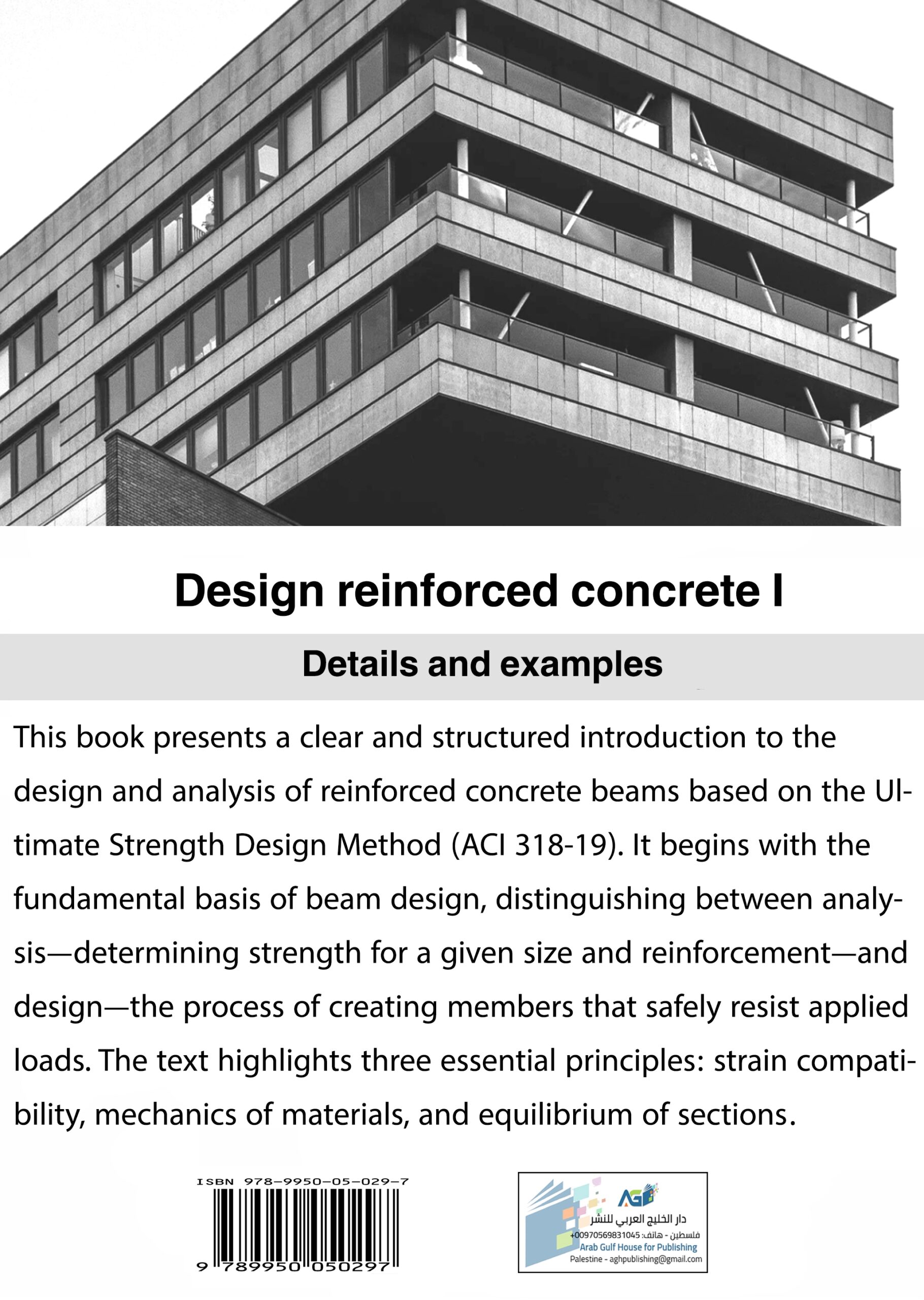This book presents a clear and structured introduction to the design and analysis of reinforced concrete beams based on the Ultimate Strength Design Method (ACI 318-19). It begins with the fundamental basis of beam design, distinguishing between analysis—determining strength for a given size and reinforcement—and design—the process of creating members that safely resist applied loads. The text highlights three essential principles: strain compatibility, mechanics of materials, and equilibrium of sections.
Key topics include effective span and depth calculations, the classification of loads (dead, live, and environmental), and the criteria of serviceability, strength, and structural safety. The book further examines deflection control, cracking, and vibration limits, supported by relevant formulas and design tables.
Building on these foundations, the discussion advances to the Strength Design Method, covering theoretical assumptions such as strain distribution, the stress–strain relationship, rectangular stress block idealization, and equilibrium of internal and external forces. The book emphasizes flexural design strength (ΦMn ≥ Mu), factored loads, and the conditions required to achieve safe, efficient, and economical designs.
Combining theory, design rules, and code-based requirements, this book serves as a practical reference for students, engineers, and researchers in structural engineering. It bridges fundamental mechanics with modern design standards to provide a comprehensive resource for reinforced concrete beam design.























